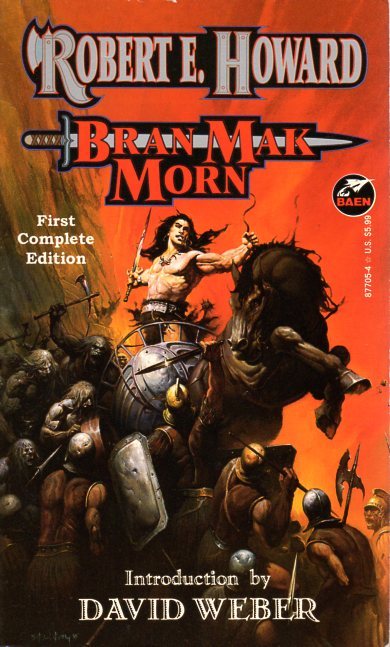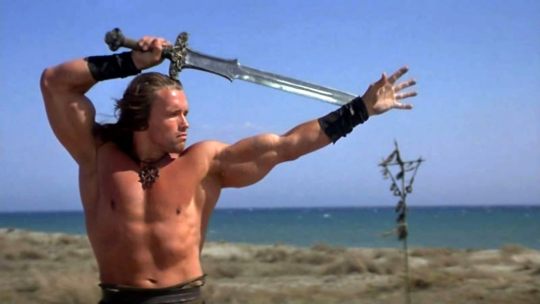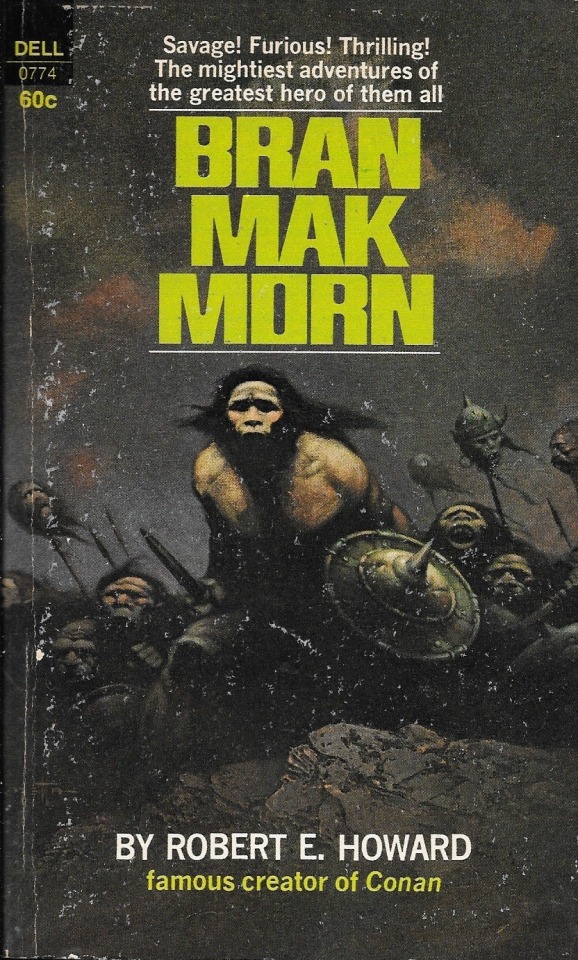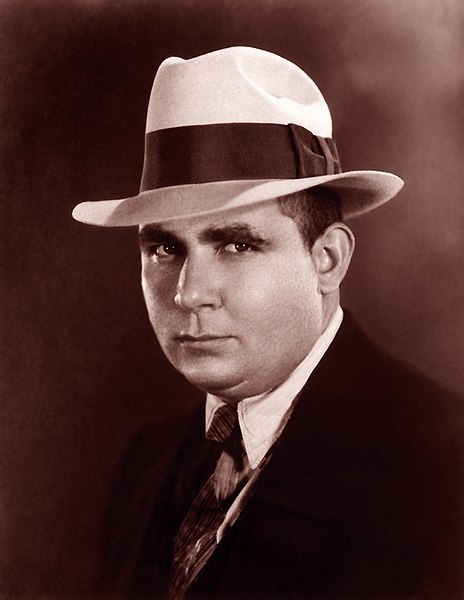#tales of an xennial
Text
Gen-X Bingo
Friend shared this: https://imgur.com/gallery/kL4U0PM
And here’s mine:

Can’t remember the name of the typing program I used, and I wasn’t allowed posters in my room (or much TV.)
P.S. for non-Americans or the uninitiated, *69 / star sixty-nine is NOT the same as regular sixty-nine - it was the number you rang to find out who had called you last, if you didn’t have an answering machine and nobody picked up / they hung up as soon as you answered.
#random#memes#gen x bingo#American stuff#yes I'm old#the 90s were my zenith#and honestly I really liked Crystal Pepsi :<#tales of an xennial
4 notes
·
View notes
Text
αἰσχρός

Dear Caroline:
In many ways, some of your early blog posts feel like a story of two Scotts, Alexander and Aaronson, both of who you looked up to, but I'd say especially the first one. Those were the golden days of Slate Star Codex, which for those involved in the Rationalist community to whatever degree acted as much more than a blog, and more like an agora, a manifesto, a lighthouse beacon, a positive phototaxis for the truth-seeking moths. I have given a try at SSC and its modern reincarnation -In Cinere Resurgo- Astral Codex Ten, but I must say that with very moderate success, as I have little interest in posts about medicine, psychology and forecasting in general, and this is made worse by the long-windedness of the posts. I am a very early Millennial (or a very late Generation Xer - somewhere I've read us described as 'Xennials') from a very backward and untrendy region (for Western Europe), which means I only got started with the Internet in my twenties, and find it hard to pay attention and concentrate on long swaths of digital text.
And yet some posts I do find appealing and interesting, as was the case of the one you linked here -not 100% it was you or the blogger you were reblogging, but I don't think it matters much, as I suspect you would share his/her appraisal. And as usual, your very apt commentary clinches the argument.
This 'tale told by an idiot, full of sound and fury, signifying nothing' in which we find ourselves in has lots of unfairness and injustice, so much it almost makes the concept of fairness a cruel and meaningless joke. Also, humans being the animal we are, we tend to focus only on what affects us and minimize the complaints of others. All the more's the merit for your sensibility towards male awkwardness, shyness and unattractiveness, and a good piece of evidence, if any were needed, of both your wisdom and essential goodness. And for that, and for many, many other things, it is that you make the world a better place. It will definitely be worse -and duller- when you're no longer around.
Quote:
She had a heart of gold and a spirit that would never be broken, no matter what life threw her way.
Anonymous
1 note
·
View note
Photo

Sadie's a beast. Let's burn some stuff down! - Jez
Gen Z + Xennial = Sleepless Beauty. Girl, don't neglect your skincare routine!
10. [IMAGE] ZOOM PANEL #9 FRIDAY, AUGUST 5 AT 4:00PM PT (Pacific Time): Annabeth Gish, Actress
NOTE: Due to unforeseen circumstances, this panel has been canceled.
Zoom Challenge: To Be Announced Live! Annabeth Gish is a passionate advocate of The Unusual Suspects Theatre Company, which brings performance arts access to underserved young people. One of their programs is the “Neighborhood Voices Program,” which encourages adults, elders, and kids to co-write a modernized fable. Take a page from their (play)book: Working with someone who is at least one generation younger than you, co-write a one-page intergenerational fractured fairy tale. Post your story online and tag @annabethgish (@annabeth_gish on Instagram) and #GISH.
0 notes
Text
On Marriage:
Baby Boomers: We're getting married because that's what everyone else does and it's just normal, yeah?
Gen X: We're not getting married because it's just a piece of paper and doesn't mean anything. Our love is all that matters.
Millennials: We're getting married for the meagre legal protections it might offer us as our society crumbles into deep dystopia. You know it's coming.
#Hamdmaids tale might be getting to me#millennials#baby boomers#gen x#xennials#boomers#generations#generational differences#millenials#xennial#marriage#marrieds#reasons
53 notes
·
View notes
Text
Just in Case you didn’t know;
Silent Gen 1925 - 1945
Baby Boomer 1946 - 1964
Gen X / Baby Bust 1965 - 1979
(*Xennials 1975 - 1985)
Gen Y / Millennial 1980 - 1994
Gen Z / iGen 1995 - 2012
Gen Alpha 2013 - 2025
They are kind of subjective and can over lap. Generations are a grouping of people by age defined more so by their culture and world view, and not a constant set of years.
For example, the year I was born would tell me I’m right at the tale end of Millennial, however I fit the mindset of Gen Z more that Millennial so I’ve always called myself a Gen Z.
*Xennials is a crossover Generation, you can take it off this list without missing any years. It was added in due to an observance of an odd mixture of the culture and outlook of Gen X and Millennial in people born in roughly that decade of time. People probably won’t start referring to themselves as a Xennial, and just continue to claim either Gen X or Millennial, but it was an interesting foot note that researchers have recently decided to through in.
5 notes
·
View notes
Text
Before Conan the Barbarian, There Was Bran

By Adrián Maldonado
I write about medieval barbarians in my legit academic work, and use this blog to explore how they occasionally escape from our powerpoint slides into the public consciousness.
I recently realized that for all my degrees, I didn’t know a thing about one of history’s most famous barbarians. It was high time I looked up Conan.

Stock image of Dark Age Europe
In my 80s childhood, Conan the Barbarian was a kind of folk character – a stock image of a beefy white guy in a furry loincloth with a giant sword. (I would probably be picturing Conan the Librarian, to be honest.) But I already had He-Man in my life, a knock-off Conan cartoon made to sell toys, though I could not have known that because the cartoon was so unspeakably awesome it would brook no questioning. Indeed, I only discovered the Schwarzenegger Conan films later on, when I was old enough to realize he had made other weird, non-science fiction films back in the Reagan era. I knew vaguely that the character was based on a book, or was it a comic book? This was before the internet, and before I could ever give a shit about a character with no good action figures.
Flash forward twenty years or so, when I am a grizzled Xennial hunched over his computer, writing about depictions of the Picts in pop culture. Immersed in terrible filmic depictions of ancient Scottish warriors (always warriors), it struck me that I had never thought about Conan the Barbarian. What kind of barbarian was he meant to be? Did his story take place in some kind of historical epoch? Were there Picts in it that I could add to my list?
Imagine my shock when I did find a Pict down this rabbit hole (or souterrain?), and he looked like this:

Whatever else I was working on, stopped.
***
Robert E. Howard is best known today as the creator of Conan the Barbarian. But little did I know that he was one of the first pop culture appropriators of the Picts. Indeed, he was writing about the Picts long before he even conceived of Conan. The Picts were his muse. I feel like this is important, and I may need more than one blog post to say why. But first, an introduction.
I had seen some hilarious renderings of Picts over the years, but they always fell into the usual stereotype of tattooed maniacs hurling themselves onto Roman spears.

Tattooed maniacs hurling themselves onto Roman spears (source)
This 1960s paperback collection of stories by Howard entitled Bran Mak Morn, apparently the last king of the Picts, depicted this king Pict as a Neanderthal surrounded by howling ape-men. To me, this seemed like the purest distillation of the idea of the barbarians beyond the wall as sub-human, a trope developed in Roman imperial propaganda and continually reproduced today by the Hadrian’s Wall heritage ecosystem.
The paperback was one of a series of reprints of Howard’s genre-defining pulp fantasy of the 1920s and 1930s, brought back to life in the wake of the Tolkien wave of the 60s. Closer inspection revealed that Frank Frazetta’s 1969 cover image bore little resemblance to the description of Bran himself in Howard’s tales, even if his Pictish ‘race’ was certainly of a simian variety. More on this presently. What I wanted to know first was how a Texas kid learned about the Picts in the early 20th century, and came out with this.
***

Robert E Howard had a tough childhood in his native Texas. Coming from a broken home, he moved around a lot and read books to keep himself company. In 1919, at the age of 13, his father dragged him to New Orleans while he took classes, so he squirrelled himself away in a library on Canal Street. It was there that he first read about the Picts in a book about British history. The image of a little, dark race from the north that hassled the Romans but could never be conquered fascinated him. Perhaps due to the ray of light this book gave him at a sensitive point in his childhood, the Picts remained ingrained in his mind for the rest of his short life, which he would later take in 1936, at the age of 30.
Like many other nerdy kids, he wrote stories to pass the time. In his archive were found several early writings which reveal the impact the Picts had on him. There is a school paper from 1920-23 about the Picts. The first story he ever submitted for publication was about the Picts, ‘The Lost Race’, but it was rejected by the editor of Weird Tales in 1924. He sold his first story later that year, beginning his professional writing career. A revised version of ‘The Lost Race’ was finally published in Weird Tales in 1927, introducing the world to Bran Mak Morn, a Pictish king who fought the Romans. He would go on to make several more appearances in Howard’s swords-and-sorcery tales, and the Picts eventually became one of the myriad ‘races’ in Howard’s Hyborian Age, a proto-prehistoric shared universe inhabited by Conan the Barbarian.

Bran Mak Morn by Gary Gianni (source)
Howard’s Picts are a peculiar bunch. From his first essay on them, he describes them as the remnants of the stone age inhabitants of Britain, comparing their appearance to Native Americans. In this view, they were the ‘Mediterraneans’ (as opposed to Celts or Nordics) who first brought the knowledge of farming to Britain in the Neolithic. They were eventually swept aside by the fair-skinned ‘Celtic’ race of metalworkers, at which point they were forced to mingle and interbreed with the indigenous cavemen, a barely human simian-like race. This meant that by the arrival of the Romans, the Picts had become stunted, swarthy, long-armed ape-men. All except Bran Mak Morn, their king, who had kept his bloodline pure. All pretty disgusting racial logic now, but hey, so the argument goes, it was the 20s.
Except that here it was, unfiltered and raw, in a book released during the height of the civil rights struggle in the United States. I bought this ancient artefact off of Amazon for pennies, and holding it in 2017, it felt like I’d acquired an illicit antiquity. Plenty of writers have tripped over themselves to call out and defend Tolkien and Howard regarding the racial (if not always racist) component to their mythical prehistories, so I won’t go down that route just now. But that cover image haunted me.
***
In 2005, Bran Mak Morn received a brand-new edition, the Weird Tales stories now bundled with unpublished manuscripts, fragments of Howard’s correspondence, and critical essays by Rusty Burke and Patrice Louinet. Armed with an annotated timeline of Howard’s Pictish writings, which spanned his career, and supplemented with google-fu, I was able to clarify the genesis of Bran Mak Morn.

Former Canal Street public library, New Orleans, 1911 (source)
It is possible to trace the public library Howard visited when he was 13, when he first encountered a British history book and his vision of the dark, prehistoric Picts. The Canal Street public library in question must be the one that formerly stood at 2940 Canal Street at the corner of South Gayoso, opened in 1911. A photograph survives on the New Orleans library website, and Google Maps reveals it is now a Yoga studio.

Origin myths of the Picts (source)
Rusty Burke has also plausibly identified the very book that Howard seems to have read: The Romance of Early British Life (1909) by George Francis Scott Elliot. This is apparently one of the flashy, pulpy ‘Library of Romance’ published by London-based Seeley and Co, described as ‘profusely illustrated’ ‘gift books’, which included among their number volumes such as The Romance of Modern Mining and The Romance of the World’s Fisheries. The author Scott Elliot was a botanist and antiquarian, president of Dumfries and Galloway Natural History and Antiquarian Society during an apparent low point in its history.
The fairly ridiculous book in question seems to have been written for Edwardian teenage boys, and does indeed bear the DNA of Howard’s later writing on the Picts: “In very ancient times Britain had been twice conquered, first by the small, dark Picts of the Mediterranean, and later (about 2000 or 1000 B.C.) by the tall, brown-haired, Gaelic-speaking Celts (237).” The chapter on the introduction of farming to Britain is called ‘The coming of the Picts’, in which Scott Elliot explains that they have been called by several names before – Homo Mediterraneus, Basques, Iberians, Silurians, the Firbolg, the Dolmen-builders – but he calls them Picts to save on ink (80-1). He claims they are still readily identifiable in the present day, as the short, brunette people who are mostly found in towns and cities, unlike the fairer Teutons or Kelts who prefer the countryside (92-3).
Howard’s vision of the Picts was thus formulated by the equivalent of our contemporary public archaeology, an accessible potted prehistory of Britain by one of Scotland’s leading antiquaries. Why this particular image, of a dark, forgotten people without a history, resonated so deeply with him, is a subject to ponder. But he was clearly not alone in his fascination. While racial views of the past soon died out in archaeological writing, they would go on to have a tenacious grip on the fantasy world. And which of these two genres do you think has a greater influence on people’s image of the medieval past?
***
Why does any of this matter? It is a demonstration of the role of ‘the Picts’, in various guises, as the untermenschen of what you might call western folk history. The fact that a young boy in inter-war Louisiana could head to the nearest library, read about them in a cheap history book, and then build a world-beating fictional universe that is still beloved today based on this is remarkable. As I’ve spent some time documenting on these pages, that image of the Picts is still in a way with us. A recent article in the Glasgow Herald has the reporter coming to the shocking insight that the Picts were not ‘hairy savages’ after speaking briefly to a couple of scholars. I wonder if that means we are doing our job well, or terribly.
It also opens up questions about the central role of race at the origins of both archaeology and the fantasy genre, a sticky subject that will have to be the subject of future blog posts [Editor's note: now read the follow-up to this post]. In the meantime, go check out similar topics being covered over on The Public Medievalist.
And hey, why not donate to your local public library while you’re at it?
***
Follow us on @AlmostArch
Header image via Jeff Black
5 notes
·
View notes
Text
JJ... about Episode IX. (mild spoilers for Last Jedi)
Dear JJ Abrams,
So. Let’s talk about Star Wars for a moment.
First of all, I and every nerd fan boy out there owe you a great debt of gratitude for what you have done for two of the world’s biggest sci-fi franchises in the last decade. Star Trek was completely dead in the water before you rebooted it, and while Into Darkness wasn’t great, your work enabled Justin Lin to give us Star Trek Beyond, which is, in my opinion, one of the five best Star Trek movies. Then, Star Wars didn’t exactly have the greatest reputation after the prequels, but Disney trusted you enough to give us a movie that, while not the most original thing in the world, was nonetheless brilliant and turned almost ever Star Wars fan out there into a weepy little child. That, in turn, allowed us to get Rogue One and The Last Jedi, both of which have been divisive, controversial, and amazingly good stories of the Star Wars universe.
And now, with the departure of Colin Trevorrow from Episode IX, Kathleen Kennedy, Lucasfilm, and the House of Mouse have once again entrusted you with the reins of a Star Wars movie, this time with the immense responsibility of drawing to an end the forty-plus year saga of the Empire, the Rebellion, and the Skywalker family. That’s what I want to talk about, JJ.
I personally think you need to step away from Episode IX and hand it over to somebody else. I’m not saying you can’t be involved. Be involved with production every day. Write the story. But don’t be the director.
Specifically, I think you need to hand it over to a woman. Why? Because this is a woman’s story now. This is Rey’s story. Luke and Han have both shuffled off this mortal coil, and unfortunately, Leia is soon to do the same as a result of Carrie Fisher leaving us all too soon.
There’s a number of people who come to mind. We know that Kathryn Bigelow has the ability to make a very good war epic (The Hurt Locker, Zero Dark Thirty), and make no mistake, Episode IX is going to be a war epic. The new Rebellion fighting the First Order? I’m pretty sure that this is going to make Return of the Jedi look like child’s play in return.
We know that Patty Jenkins has the ability to make an amazing female-centric fantasy story (Wonder Woman), and make no mistake, Episode IX is going to be a female-centric fantasy story. This will be the movie when Rey rises to be the new leader of that which is good in the galaxy, the beacon of light for the forces that resist the fascist evil that is the First Order.
If the trailers are to be believed, then we will see very shortly that Ava DuVernay is a master of the sci-fi tale (A Wrinkle in Time), and we’ve already seen that she can make an incredible movie about the lives of ordinary people of color becoming extraordinary when answering the call to lead (Selma). Make no mistake, Episode IX is going to be a story about ordinary people of color - Finn, Poe Dameron, Rose Tico - becoming extraordinary when answering the call to lead.
Now, who knows if any of these women would be available or even willing. Kathryn Bigelow is an Oscar-winning director; Star Wars might not exactly be on her short list of things to do. Patty Jenkins will probably be taking a Scrooge McDuck-style cash-bath after making fat stacks off of Wonder Woman 2, and depending on how A Wrinkle in Time goes, Ava DuVernay may be deep into work on A Wind in the Door.
It doesn’t have to necessarily be one of those three, but I think you really do need to consider that a female director is the best to tell Rey’s story. In this era where toxic masculinity is being exposed as unacceptable in Hollywood, it is incumbent upon the men in power to relinquish that power and allow it to be taken up equally. That’s you, JJ.
At the end of the day, regardless of who directs Episode IX, I will see it, probably multiple times, and then buy it on Blu-Ray. I will rejoice at the ascendance of Rey and the final defeat of the forces that Sheev Palpatine set into motion on Naboo many years before (come on, we all know it’s inevitable), as well as the destruction of that “Make the Galaxy Great Again” turdlet Hux. But wouldn’t it be great if this final chapter of the Skywalker saga, the one in which a powerful woman rises from being nobody to being the beacon of goodness in the galaxy, was also the first Star Wars movie directed by a woman?
Just think about it, JJ. It couldn’t hurt.
Sincerely,
A 36 year-old Xennial Christian white heterosexual cisgender male lifelong Star Wars fan
#Star Wars#The Force Awakens#The Last Jedi#JJ Abrams#Star Trek#Into Darkness#Beyond#Lucasfilm#Disney#Skywalker#Luke#Leia#Han Solo#Rey#Poe Dameron#Finn#Rose Tico#Patty Jenkins#Wonder Woman#Ava DuVernay#Selma#A Wrinkle in Time#Kathryn Bigelow#The Hurt Locker#Zero Dark Thirty
1 note
·
View note
Video
youtube
Let's Be Heroes (Synthwave - Retrowave - Chillwave Mix)
I only recently discovered Vaporwave....it seems to be popular especially among Xennials and Millennials...maybe some Xer’s who were more in the know than me. It expresses a nostalgia for 80s / 90s synth and aesthetics but a lot of time feels like misremembered 80s...it wants to evoke “early 80s” but this kind of synth was more typical of mid-to-late 80s and beyond, not early 80s, not really.
It’s also tied up with a retro anime aesthetic, too--though not always--but the versions that are are indeed what I prefer as an anime otaku & Japanophile.
It’s a weird post-postmodern pastiche aesthetic....many in music but also in visual arts. It also seems to be evoked often by US fans of the roleplaying game “Tales from the Loop”, based on the sci fi artwork of Swedish painter Simon Stalenhag. Stalenhag does not himself use the Vaporwave style, or at least only tangentially. His own style is unique. But I can see how US fans would glom onto a Vaporwave aesthetic to weave into the fabric of the game. It is a logical fit, even if it is a creative add-on largely exterior to Stalenhag’s ouvre.
0 notes
Text
‘To All the Boys: P.S. I Still Love You’ Review: Bliss, for Now
“To All the Boys I’ve Loved Before,” an Xennial mash note to ’80s teen romances, ended as John Hughes ordained: with the wallflower, Lara Jean (Lana Condor), and the jock, Peter (Noah Centineo), professing their love on a lacrosse field in a climactic shot with enough space in the frame to imagine Judd Nelson strutting by with a fist pump. Lara Jean swoons over one-off classics like “The Breakfast Club” and “Sixteen Candles” (even as she concedes Long Duk Dong is “extremely racist”). For viewers like her, Netflix has ordered a triple-scoop franchise based on Jenny Han’s book trilogy, the second of which, “P.S. I Still Love You,” whips drama from the question Hughes left unanswered: Is this misfit couple really a match?
Who cares, adults may groan. Two percent of marriages are between high school sweethearts. Yet, to Lara Jean, whom Condor plays with naïveté and pluck, pleasing Peter is serious. (As it is to superfans who fell for Centineo two summers ago in the first film, and studio executives who’ve staked their happiness on the young heartthrob’s rubber puppy good looks.) Can she keep her popular Prince Charming — or rather, will she keep choosing him — despite a blitzkrieg of bliss-killers that include his jealous ex-girlfriend (Emilija Baranac), his obsession with the party game called flip cup and Lara Jean’s immature belief that the perfect relationship should be, well, perfect?
Her insecurity matures this sequel from fairy tale to talk therapy. In the hands of the screenwriters Sofia Alvarez and J. Mills Goodloe, Lara Jean and her friends don’t banter — they proclaim, as if being deposed by Cupid. It’s unclear if the script’s stolid dialogue is attempting to flatter modern teens, or if the writers just don’t know any. Responding to a friend’s letter, Lara Jean begins, “What lovely penmanship you have.” Forget Billie Eilish — she fancies herself a Brontë.
To the director Michael Fimognari’s credit, “P.S. I Still Love You” doesn’t condescend to Lara Jean’s dilemma even as her choices deserve popcorn pelted at the screen. Yet, he’s content with a product that seems beamed in from a staticky old channel. Despite Condor’s determination to make Lara Jean feel like a real girl — albeit with distracting false eyelashes — she’s stuck being a clone, opening the film crooning “And Then He Kissed Me” to her bedroom mirror just as Elisabeth Shue did in “Adventures in Babysitting.” Later, when Lara Jean’s loyalty is divided by the reappearance of her sixth-grade crush (Jordan Fisher), an emotionally-attuned dork who, like her, prefers to spend his Saturdays playing bingo, the soundtrack broods with a moody cover of “Girls Just Want to Have Fun.”
How canny to capitalize on a youthful ache to rewind to an era when Molly Ringwald wasn’t forced to worry about school shootings and climate change. (The year Nixon was impeached, TV viewers made a hit out of “Happy Days.”) Fimognari, promoted from the job of cinematographer on the first installment, occasionally cribs a shot from a more ambitious movie: a floating kiss; a pair of snow angels; an argument on a class trip to the aquarium filmed before a tank of bioluminescent jellyfish, recalling a James Bond brawl in “Skyfall.” Mostly, however, the visuals are childish, with saturated tinting that has to be squinted through, as though a lollipop melted on the lens.
Ironically, the film’s best sequences are wish fulfillment for geriatrics. Lara Jean’s retro fixation reaches its peak when she volunteers at Belleview, a retirement home with fortune tellers, posh soirees and a former Pan Am flight attendant named Stormy (Holland Taylor) lording over the palm-frond fantasia like a screwball grande dame. The rooms are art deco, the wardrobes are doo-wop, and the residents groove to the Bee Gees. Pass the prune daiquiris — yes, there are prune daiquiris — and get drunk on nostalgia.
To All the Boys: P.S. I Still Love You
Not rated. Running time: 1 hour 21 minutes.
from WordPress https://mastcomm.com/to-all-the-boys-p-s-i-still-love-you-review-bliss-for-now/
0 notes
Text
You need to read this author's disastrous rejection story all the way to the end

Pretty much every author out there will have a rejection story or two.
Not many will have ones quite as dramatic as the tale author Mark Leidner shared on Twitter this week, though.
SEE ALSO: J.K. Rowling's rejection letters give hope to the writer in us all
Here it is, in all its ridiculous glory:
I once rejected my own short story from a magazine I was guest editing. The magazine had a blind submission policy, and I didn't recognize the story as my own and forgot I'd submitted it months before I was asked to guest edit the issue
— mark leidner (@markleidner) August 16, 2018
Posting the screen shots made me feel confident in my writing and that I was smarter than the entitled fuckface who'd submitted the story. I then sent what I thought was an appropriately polite but harsh rejection only to receive the email myself and realize I wrote the story
— mark leidner (@markleidner) August 16, 2018
Before I was able to delete the screen shot, it had accumulated over 8K likes and 4K shares. Not only that, another post that had screen shot my post had over 75K shares and likes. I was able to delete my own post but not the one that had screen shot my screen shots
— mark leidner (@markleidner) August 16, 2018
Luckily no one that I know of discovered that the excerpts were from my own story. Ironically, the 12K new followers I'd gained in the subsequent weeks were instrumental in giving my agent the leverage to negotiate a seven figure advance for an otherwise unremarkable novel
— mark leidner (@markleidner) August 16, 2018
I'd been workign on. 6 months later, when I was revising that novel on a deadline for my editor, who worked for a major publisher, I realized with a shock that the entire novel was an expansion of the same short story I'd submitted and rejected, which I'd also forgotten
— mark leidner (@markleidner) August 16, 2018
In the middle of the novel was one, absolutely critical paragraph, and it had been lifted from the original short story. It was none other than the very excerpt I had chosen to post online as an example of unforgivable writing
— mark leidner (@markleidner) August 16, 2018
When i called my editor and tried to tell her that I had to cut that paragraph, she was incensed, and said "it was the only good paragraph in the novel," and if I cut it out, I'd be in breach of contract, and the publisher would sue me to the tune of twice the size of the advance
— mark leidner (@markleidner) August 16, 2018
I eventually caved and the novel was published to no acclaim, and sales were bad enough to pretty much guarantee that I'd never have another deal like that again. In the mean time I'd sunk the advance into bitcoin at the peak, and lost it all
— mark leidner (@markleidner) August 16, 2018
I then had to pay taxes on the advance, and I now owe the IRS $175,000 #ShareYourRejections
— mark leidner (@markleidner) August 16, 2018
Understandably, people had some questions.
have you never written all night, fueled by the fumes of the muse, then collapsed in exhaustion, woken up late for work the next day, having forgotten what you've written, only to find it months later and, upon rereading it, felt it was made by an alien consciousness?
— mark leidner (@markleidner) August 16, 2018
it was on ello
— mark leidner (@markleidner) August 16, 2018
i was between agents at the time. and the editor worked for a publishing house that was notorious for publishing books that only had one tiny good paragraph buried somewhere in them
— mark leidner (@markleidner) August 16, 2018
By this point, plenty of people were a tad sceptical.
This whole thing is made up, right?
— John (@johnlk1980) August 16, 2018
I don't believe a word of it.
— Thea Cooke (@Thearetical) August 16, 2018
Others, meanwhile, were simply happy to sit back and enjoy the story — made up or not.
I don’t even care, it’s a great story either way
— Xennial Warrior Princess (@thefrug) August 17, 2018
Ultimately, though, the author eventually returned to Twitter to reveal the answer.
Mark- what!?
— Amber Coffman (@Amber_Coffman) August 17, 2018
purely fictional, amber! i was just try to invent an memorable example of bad behavior backfiring catastrophically pic.twitter.com/1EnJVBpPXD
— mark leidner (@markleidner) August 17, 2018
Yep: as you probably guessed by now the whole thing is made up, likely timed to promote Leidner's short story collection Under the Sea.
Hey — it was still a wild ride while it lasted though, right?
thanks! the last story in this book is very much like this thread in tone and stupidity https://t.co/AxODzHQcrk
— mark leidner (@markleidner) August 16, 2018
Seems like the best way to promote your stories these days might well be with yet another story.
WATCH: This is how words get into the dictionary

#_uuid:68c99eb6-9b5e-36c5-95cb-2fd5a965234e#_category:yct:001000002#_author:Sam Haysom#_lmsid:a0Vd000000DTrEpEAL#_revsp:news.mashable
0 notes